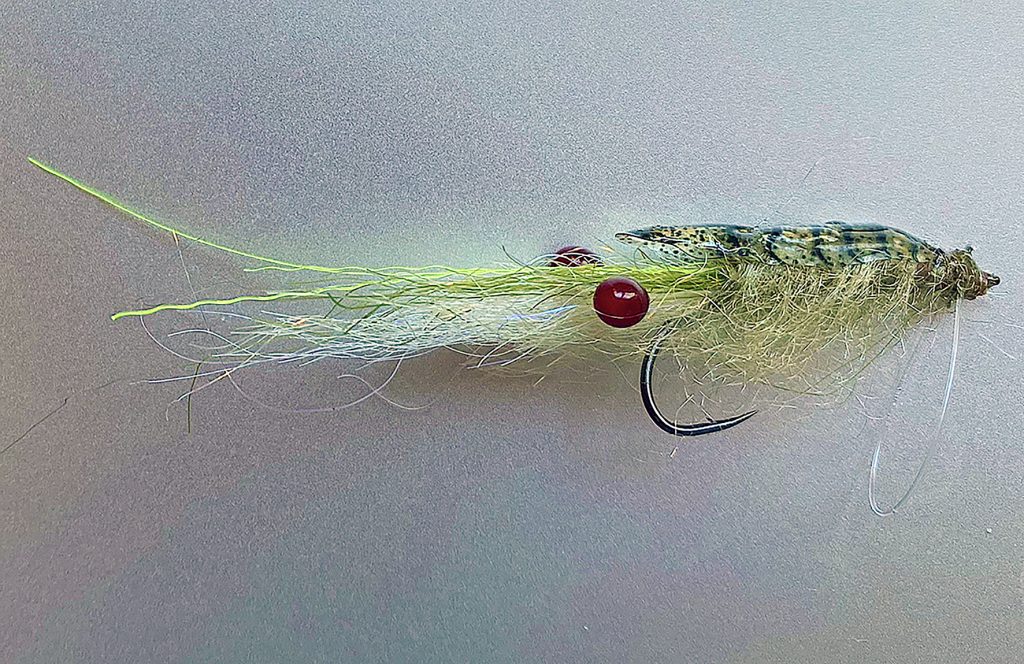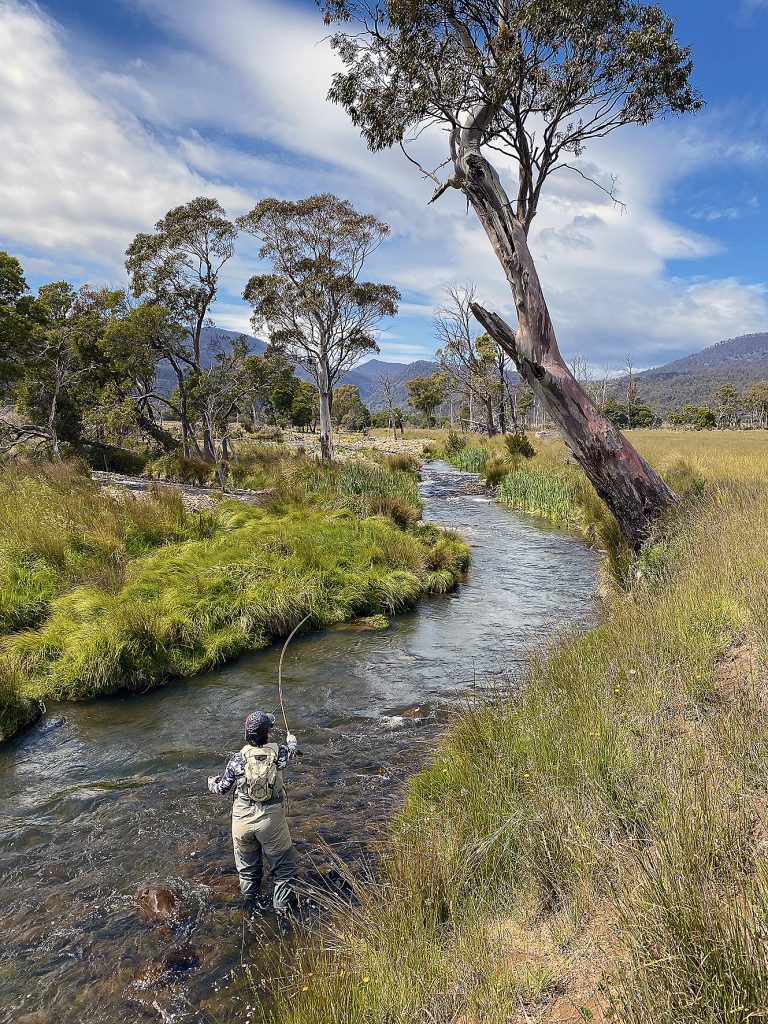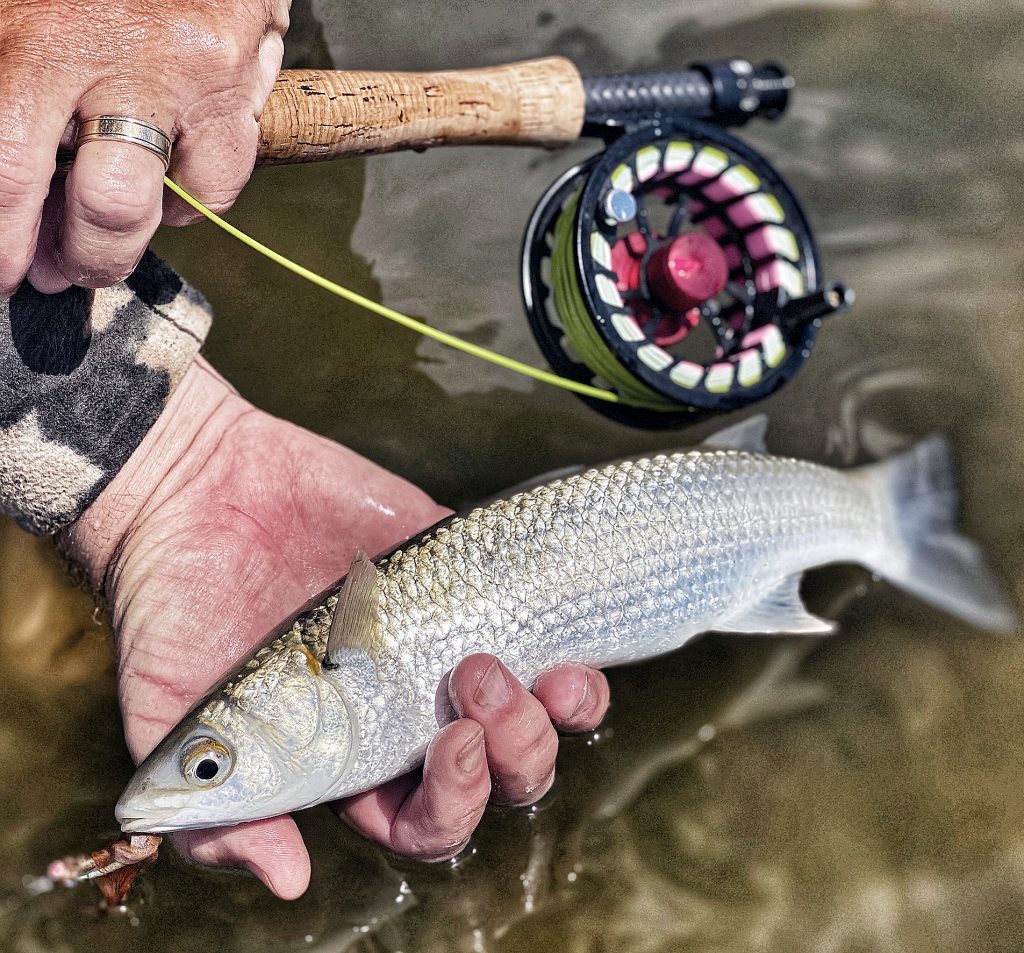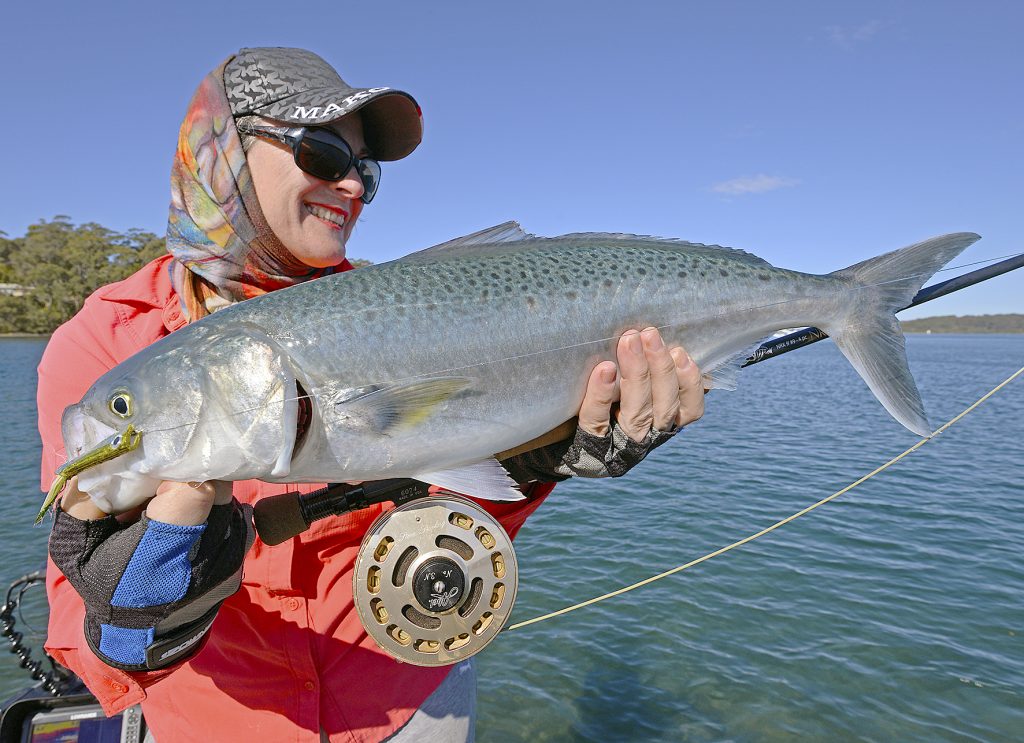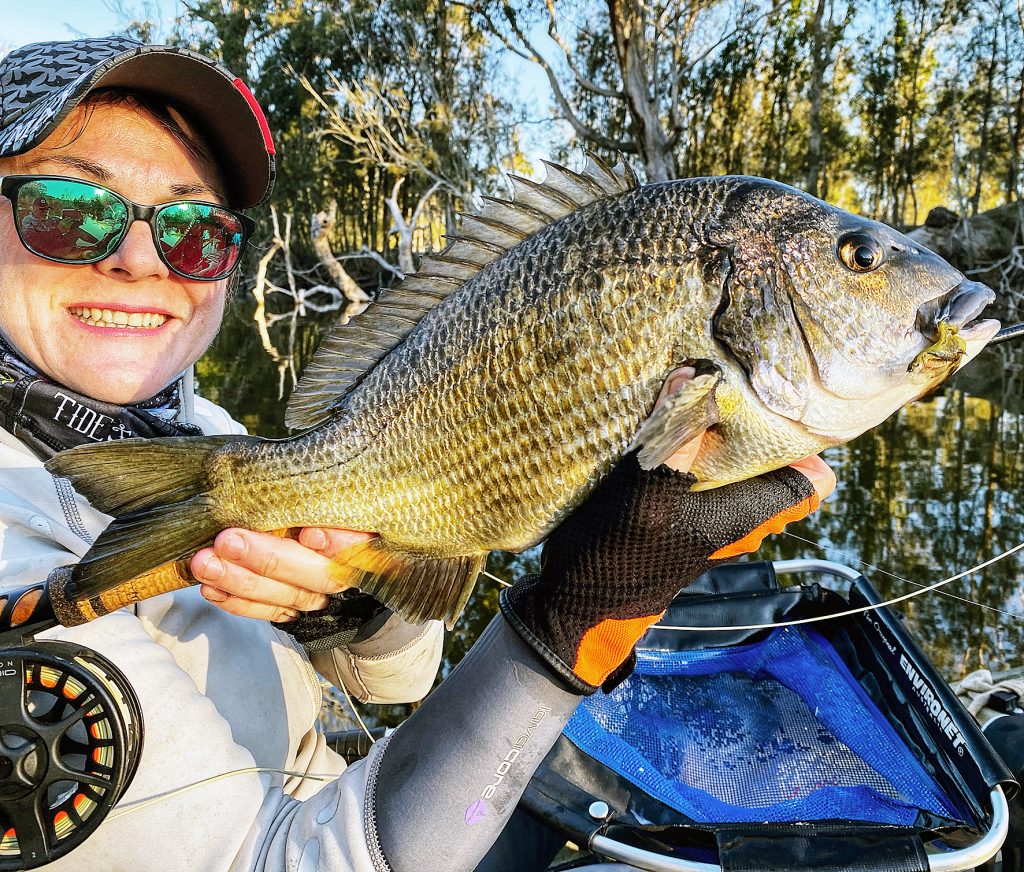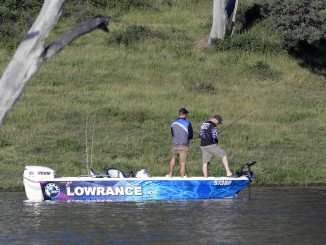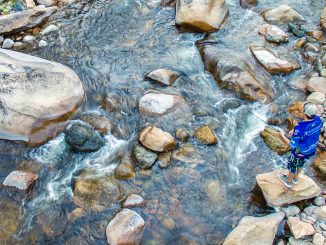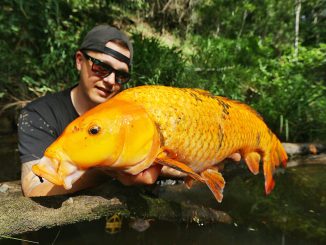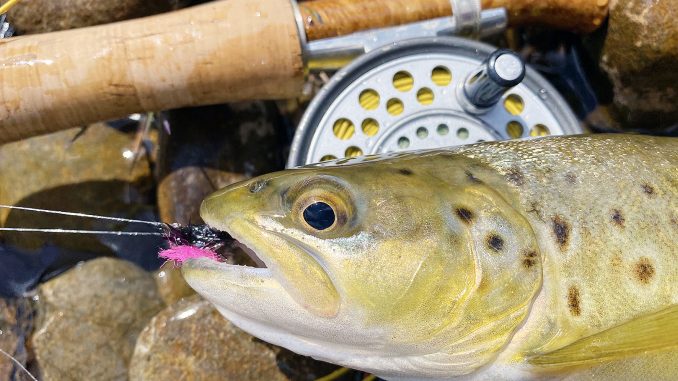
• Steve ‘Starlo’ Starling
Chasing fish on fur and feathers certainly isn’t for everyone, but you might be surprised at just how enjoyable – and addictive – it can become, not to mention how effective… and not only for trout!
Fly fishing… I’m sure the mere mention of it is enough to have some people automatically flicking over to the next page in annoyance, disgust or disinterest. Perhaps it’s like oysters, olives, coriander or the myriad other things we tend to either love or hate with equal passion, and which polarise us strongly into one camp or the other — often for life.
I must admit that I’ve been fascinated by the concept of fly fishing since early childhood, and I actually asked my grandparents for a fly fishing outfit for my 11th birthday. For better or worse, the bloke in the tackle shop managed to convince my grandfather that fly fishing was far too difficult for a kid of that age, and I ended up getting a surf rod instead. I wonder what directions my fishing life might have taken had that not been the case?
Such ‘Sliding Doors’ moments aside, it’s worth stressing that fly fishing is really just another branch of our diverse sport: nothing more and nothing less. Sure, it’s a little ‘different’, and it certainly has a long and fascinating history. But when you drill right down to the core of what it’s all about, fly fishing is just another way to catch a fish. In fact, I reckon the very best way to sum up fly fishing is to describe it as a form of lure fishing in which the “lures” are too small, lightweight or wind-resistant to be cast effectively using conventional tackle. Once you accept that very basic definition, a lot of the perceived mystery simply drops away.
Because the lures called flies are made of fur, feathers, tinsel and various other wispy materials, they’re too hard to cast on their own. So, we’re faced with two options for getting them out to the fish: we can add weight to the rig in the form of split shot, sinkers and floats… or we can move right outside the square and actually build the casting weight into the line itself. And that’s precisely what fly fishing is: a form of lure casting that relies on the weight or mass of the line to carry our offering through the air and out over the water to the fish… It really is as simple as that!
Of course, casting a line instead of a compact weight like a sinker demands an entirely different action. To do it, we need to generate a travelling wave or loop of that special weighted line that will carry the lightweight fly to its destination. If you’ve ever flicked a length of garden hose out across a lawn, waved a ribbon, or cracked a whip, you’ll have an instinctive idea of the physics involved.
I won’t lie to you: coming even close to mastering fly casting isn’t a pushover, and it will certainly frustrate you at times. I like to joke that the first 20 years are the hardest, but to be honest, I’ve been doing it on and off for well over 40 years now and I still have days when I simply want to throw the whole outfit into the water and stomp away in disgust… something I actually did one day on a gale-ravaged New Zealand river! Of course, I quickly tallied up what my expensive rod, reel and line was worth and dashed back to recover it, but that moment of heaving it all into the pool was actually quite cathartic. So was the realisation that it was probably better to avoid trying to cast in a gale!
The best advice I can give you is not to teach yourself to fly cast, even with the aid of the plethora of very good instructional videos and texts available on-line these days. Instead, spend a few bucks and take at least one lesson from a good teacher or guide early on in your fly fishing career. Trust me, it’s an extremely worthwhile investment.
Don’t rush out and buy a heap of expensive gear, either. Dip a toe in the water first. Borrow an outfit, or use one provided by your teacher. When (and if) you decide to take the plunge, do your homework first, then spend a reasonable amount – say, $300 to $700 – on a decent, middle-of-the-road fly rod and at least a hundred bucks or so on a quality fly line. They are the two most important components in the equation. Don’t scrimp on them. Fact is, there isn’t a fish that swims – up to and including marlin, tuna and sharks – that can’t be successfully targeted on fly. Best of all, it’s a great way to chase a whole swag of our most popular species in salt and freshwater. Things like flathead, bream, trout, cod, perch, mullet, salmon and tailor. But be warned – it’s also highly addictive! Once you try it, you’ll understand why.

